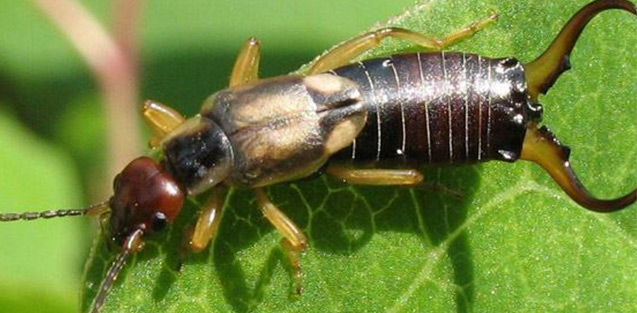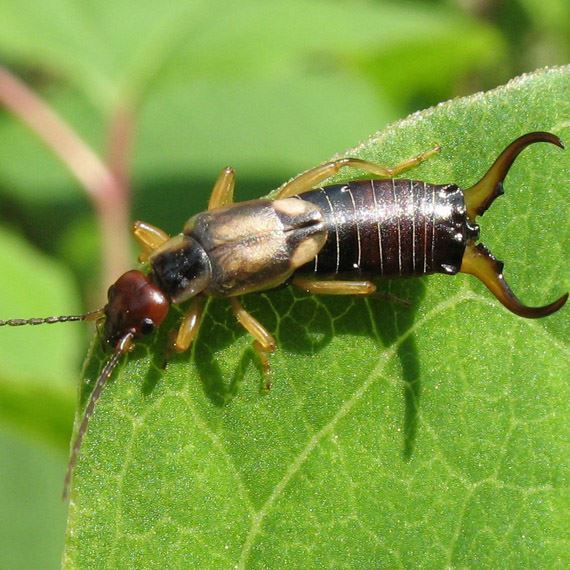
Earwigs
Size: 1/4 to 1/2 inch in length
Color: Brownish with a Red-Colored Head
Location Found: Plants and near water sources
Earwigs
Earwigs are part of the insect order Dermaptera, which is considered one of the smaller insect orders. Commonly called pincher bugs, earwigs can be identified by a set of forceps-like pinchers on their abdomen. Primarily nocturnal, earwigs often hide in small, moist crevices during the day. Usually, you will find them hiding under outdoor furniture, near water hoses, garbage cans, and non-correct fitting well caps. For most, well caps are a hot spot for spotting earwigs as these are an ideal habitat for them. Although earwigs do not pose a direct health threat, the bacteria from their decaying bodies can cause health problems if they fall into the water supply. The common earwig will seek shelter in homes during the winter as their bodies cannot withstand winter’s cold temperatures. The common earwig will also seek shelter in homes during the summer, looking for water. However, earwigs do not cause damage indoors. As part of what’s considered one of the smallest insect orders, earwigs are primarily scavengers, but some are omnivorous or predatory. Earwig’s diets can consist of aphids, mites, fleas, insect eggs, decaying plant and or insect matter, dahlias, marigolds, lettuce, potatoes, corn, hostas, mosses, lichens, and algae. European earwigs cause severe damage to seedlings and soft fruit. Earwig’s damage to plants is seen as small holes in fruits, leaves, flowers, and new plant growth. This damage can confuse other insect traits like slugs, cutworm, caterpillar, and even rabbits. If you see damage on your plants during the day but cannot locate the culprit, check plants at night for earwigs.



can treat your home or office’s current earwigs problems and help prevent future ant invasions.
